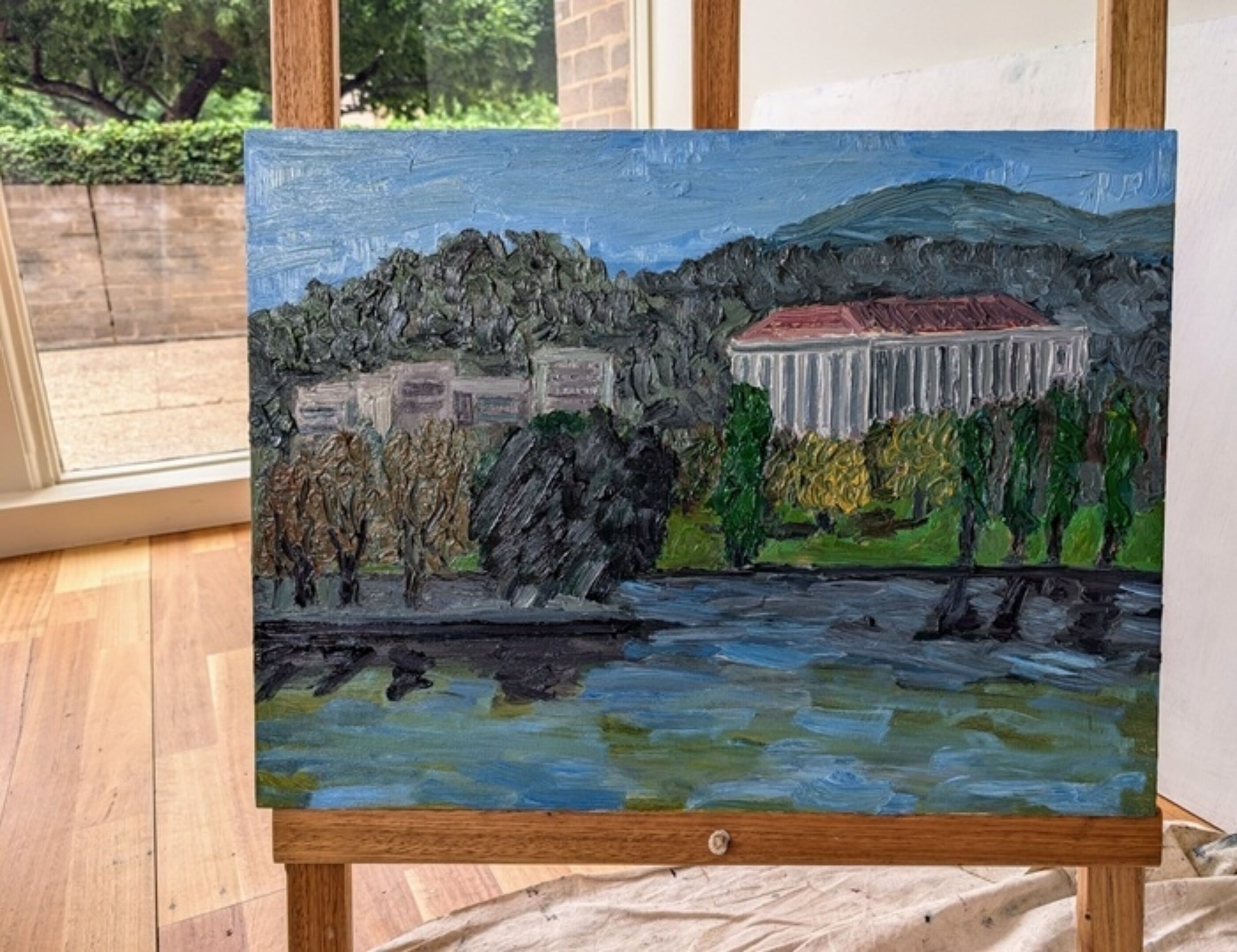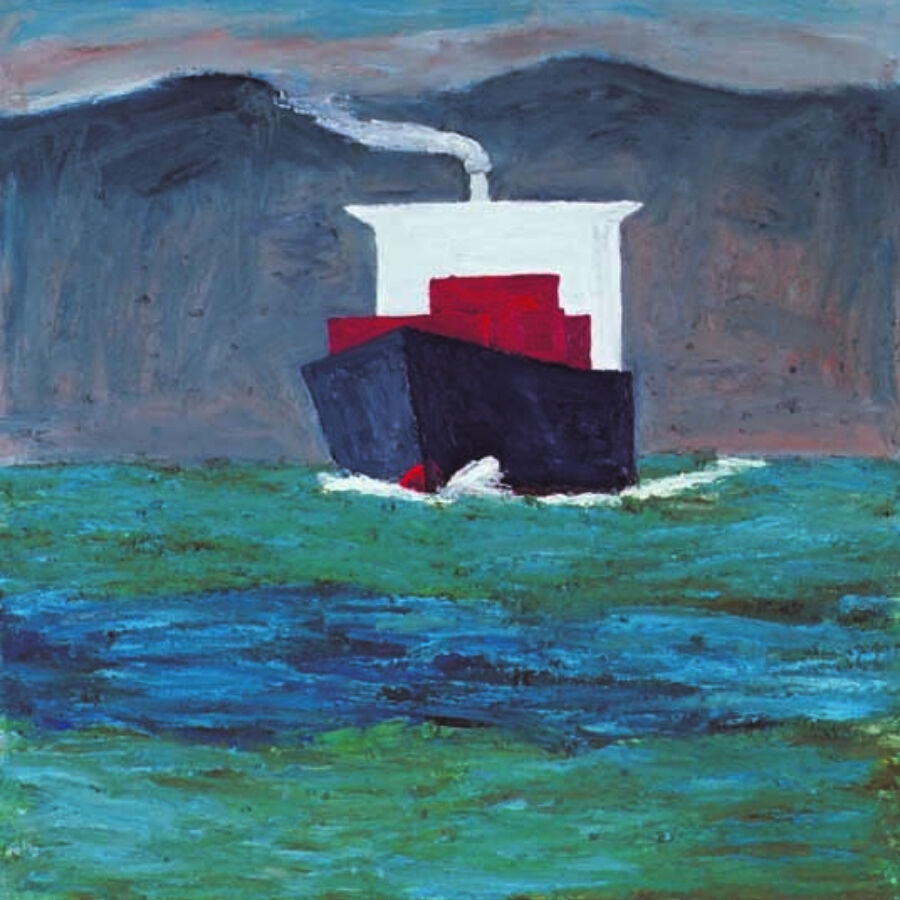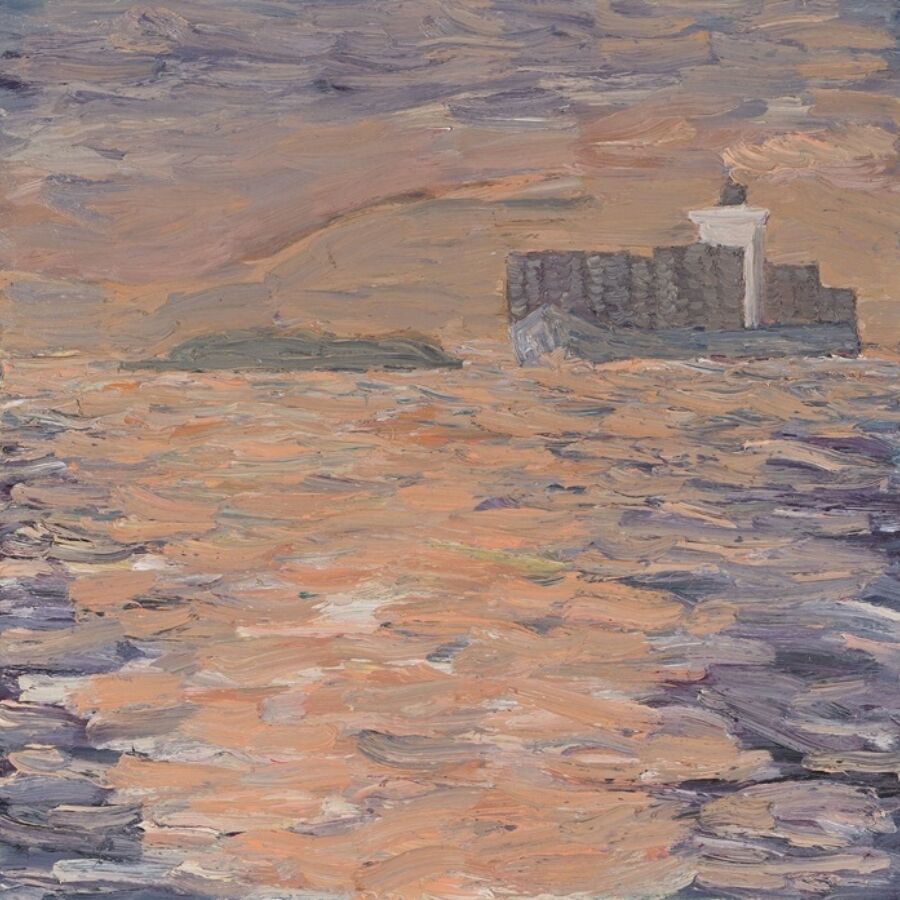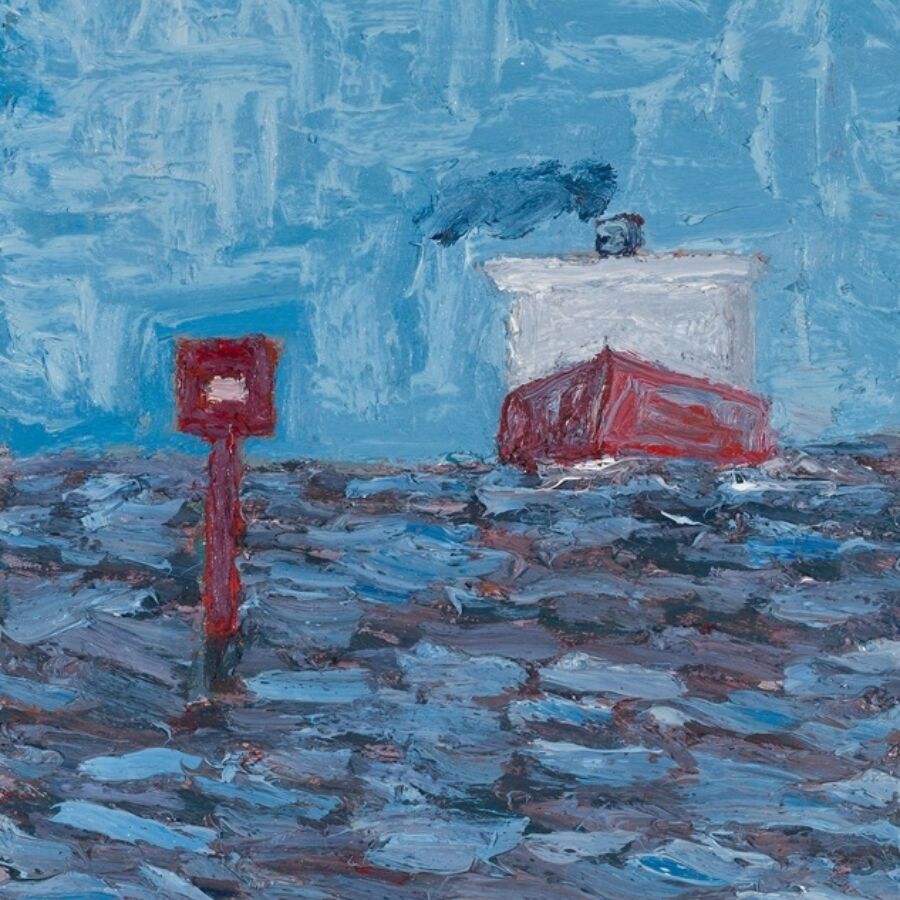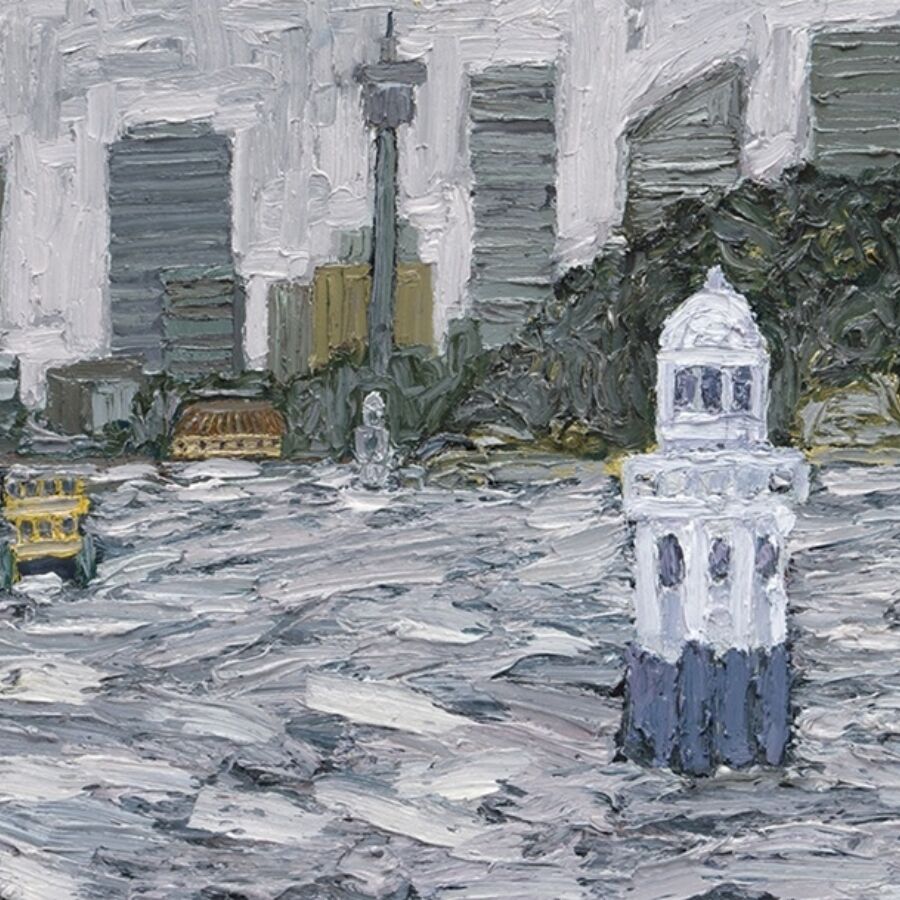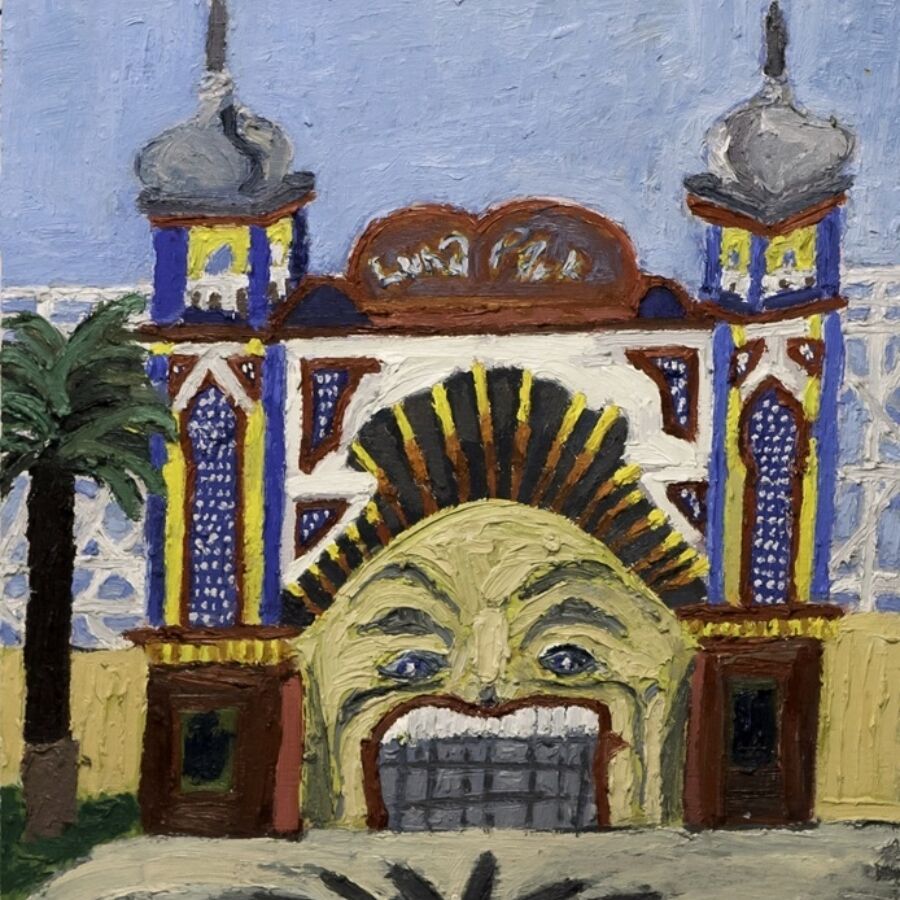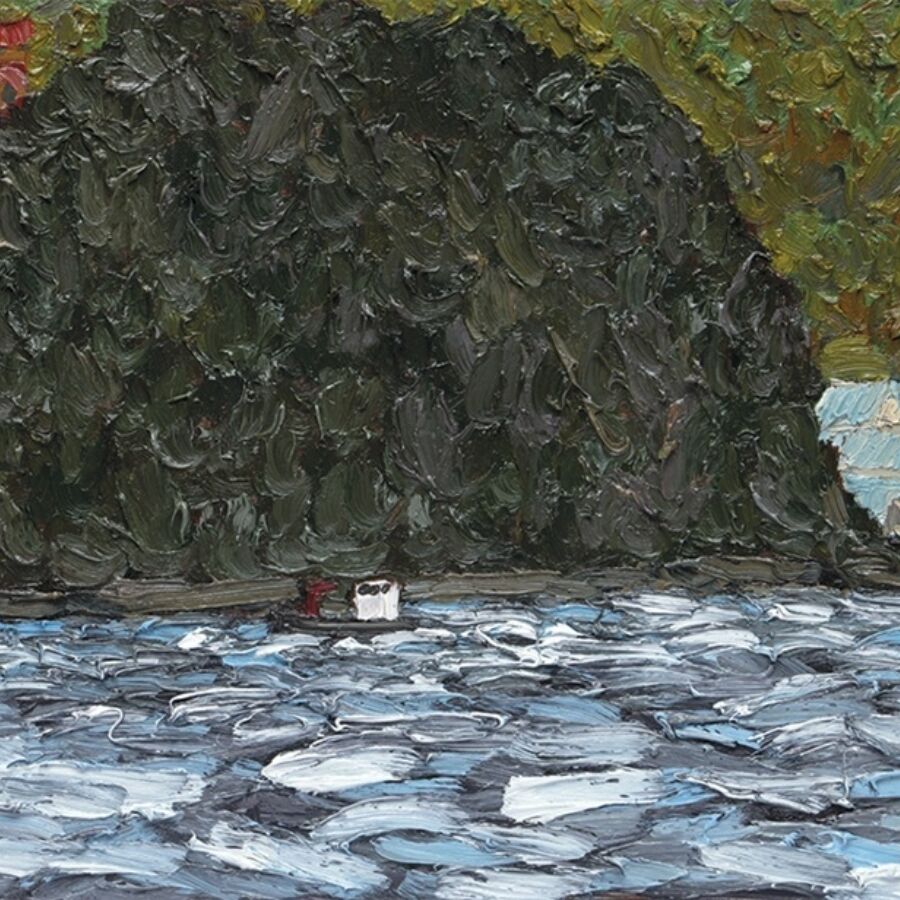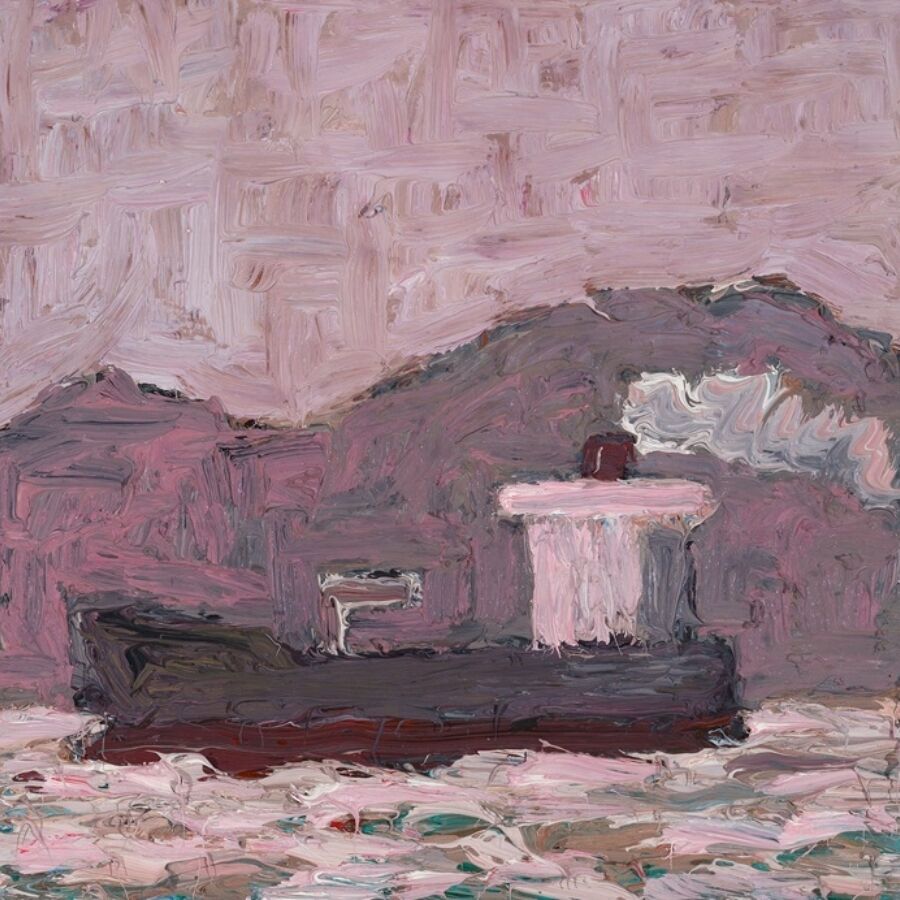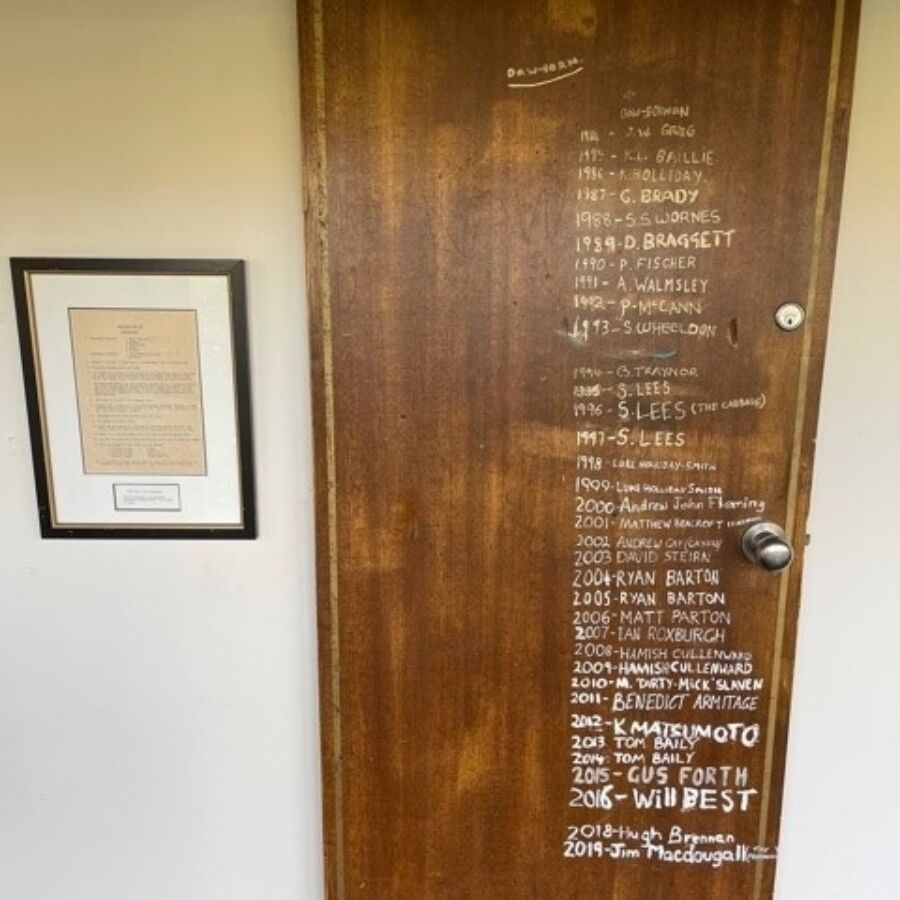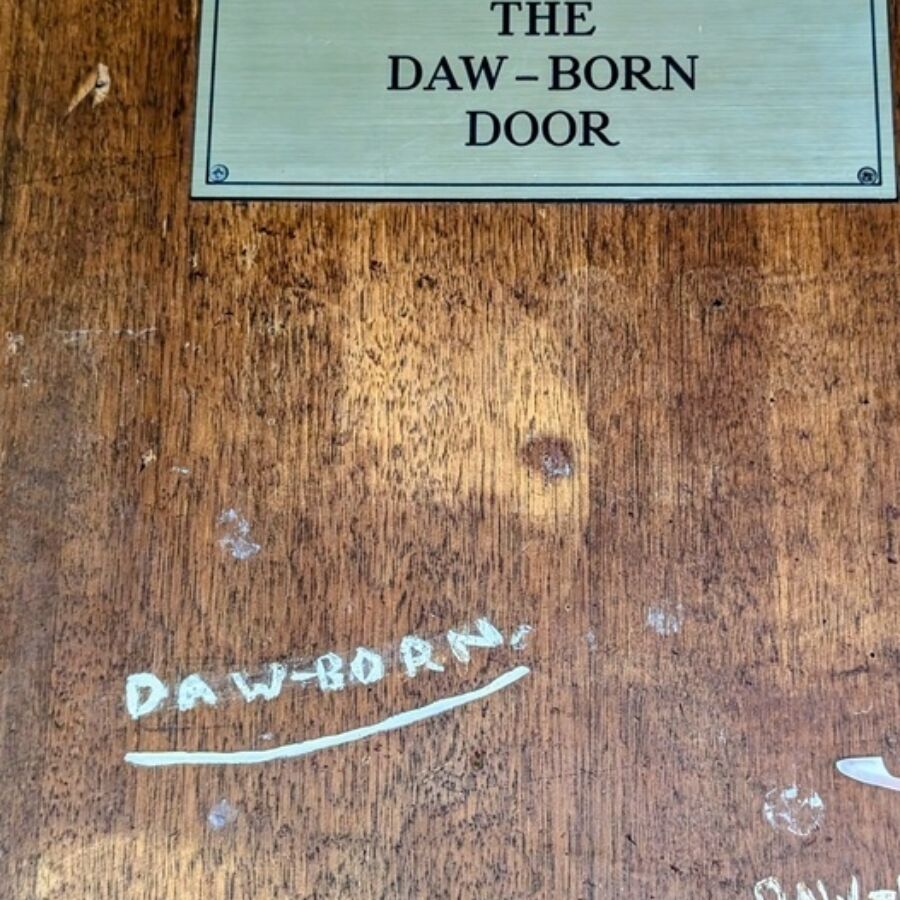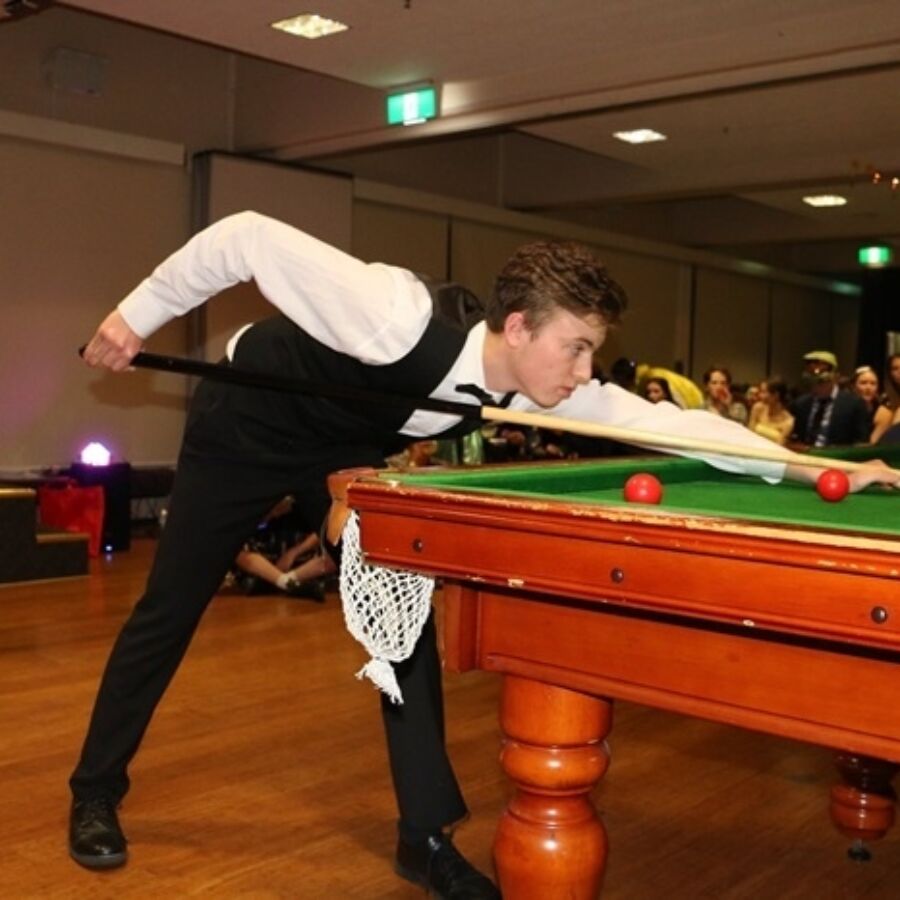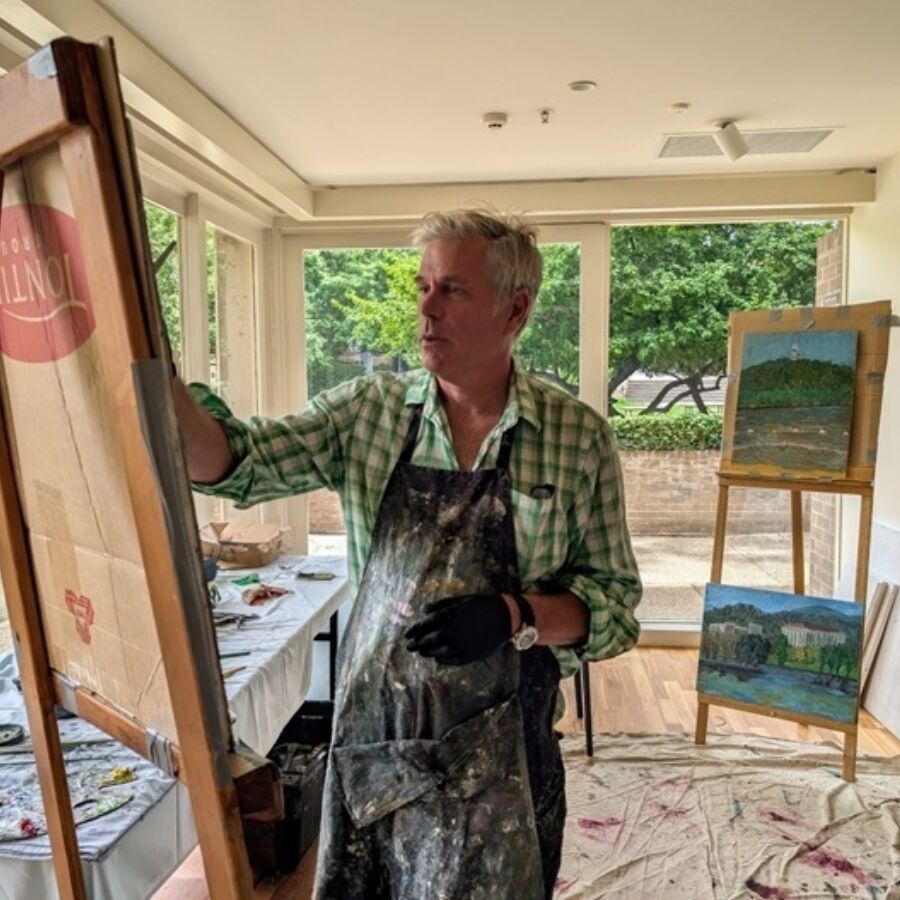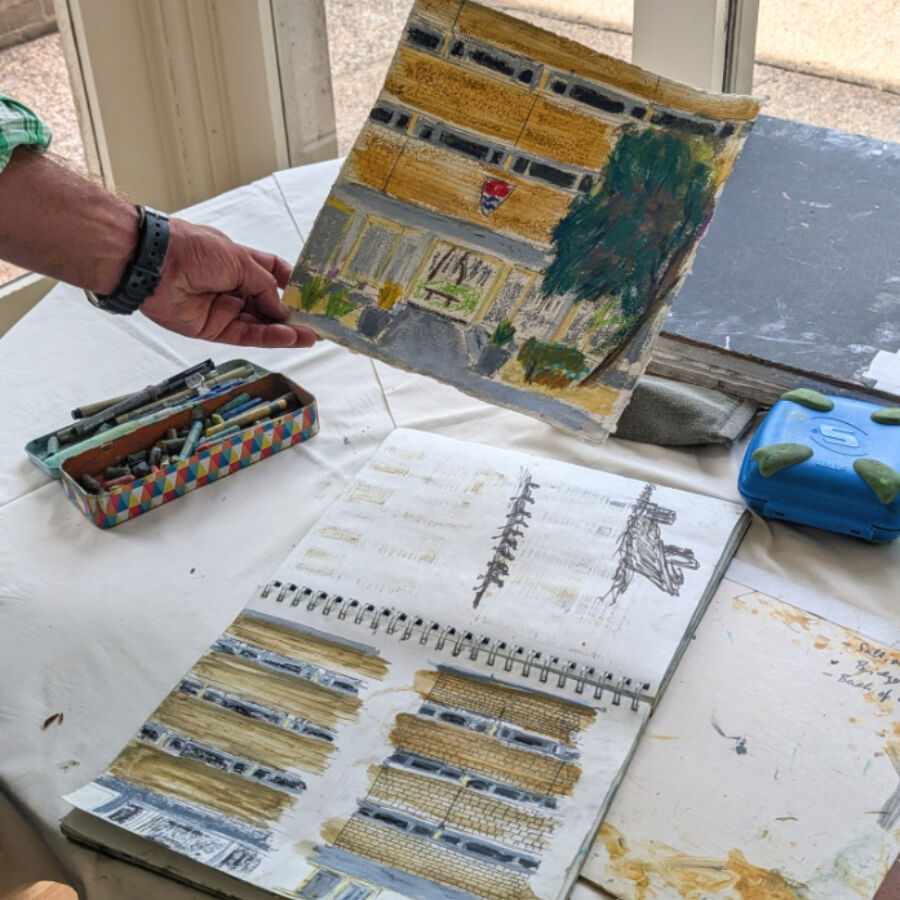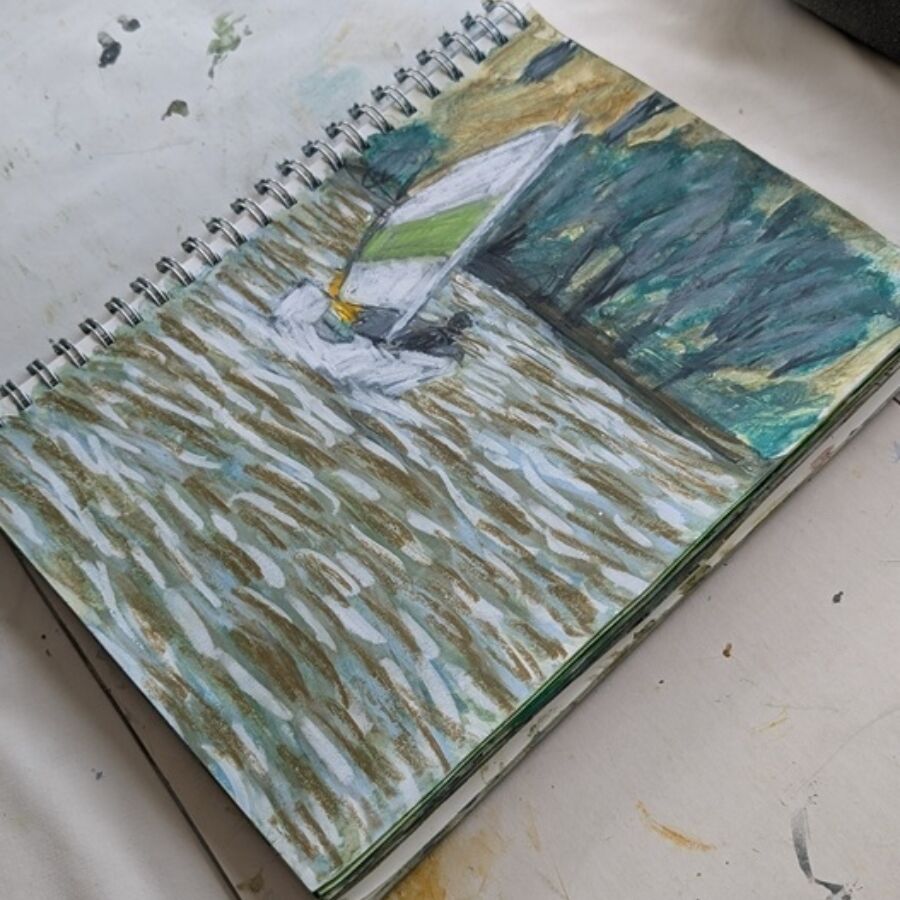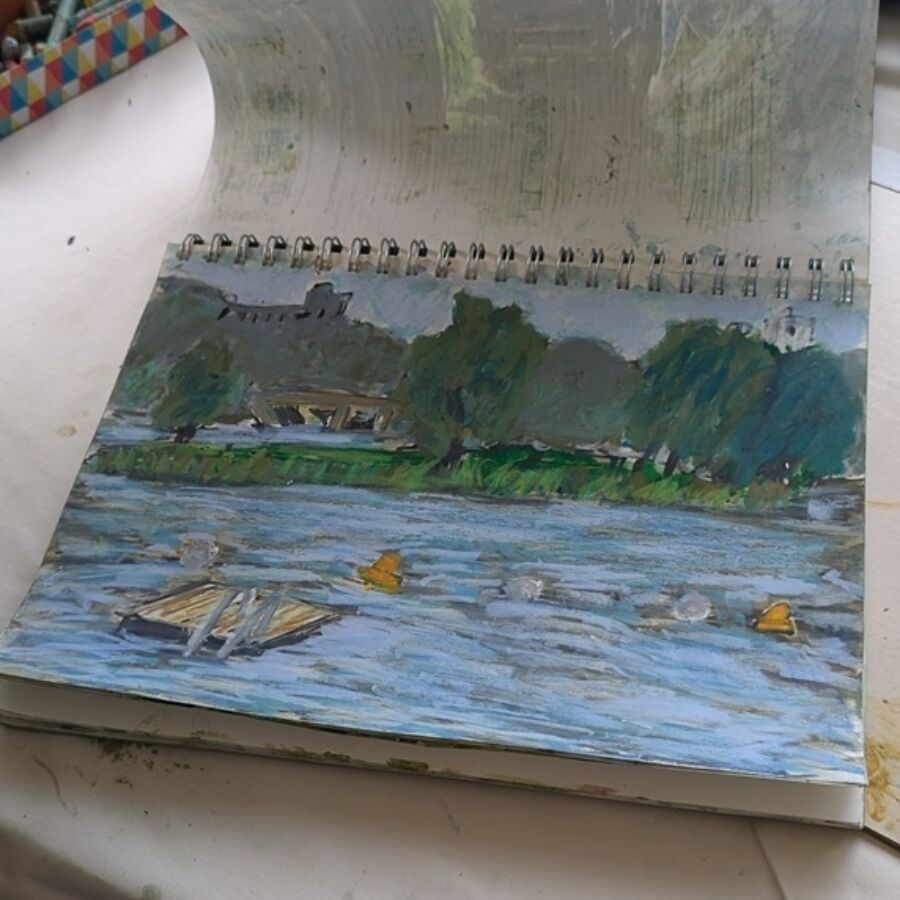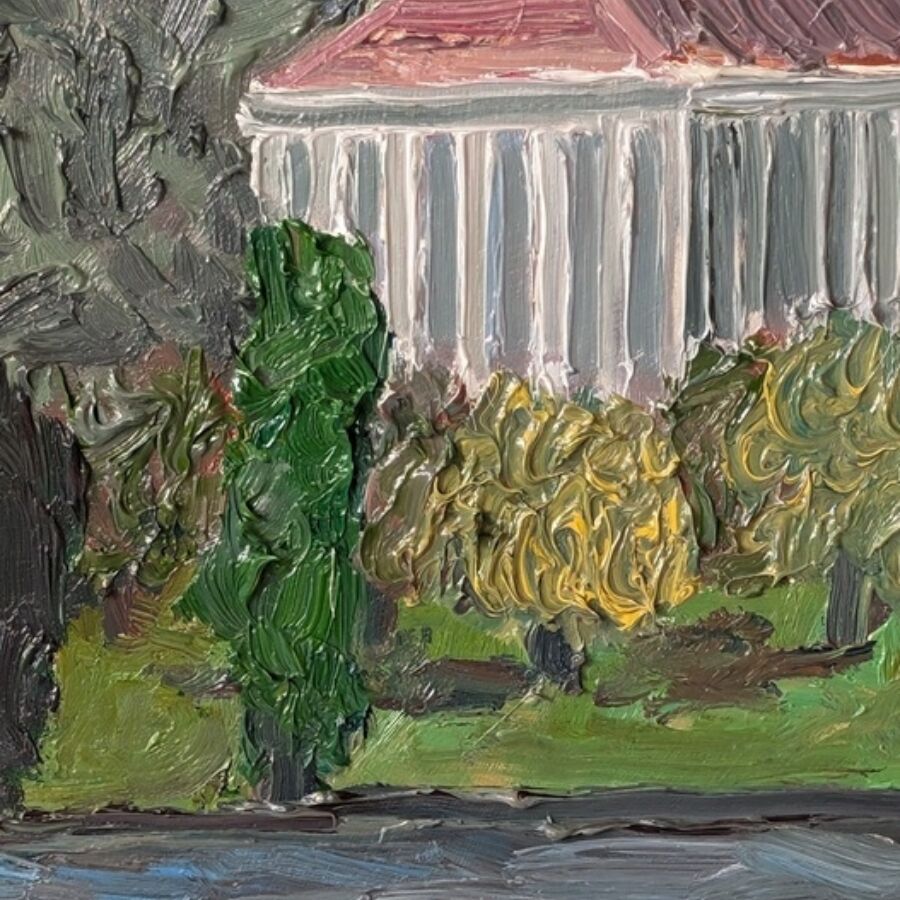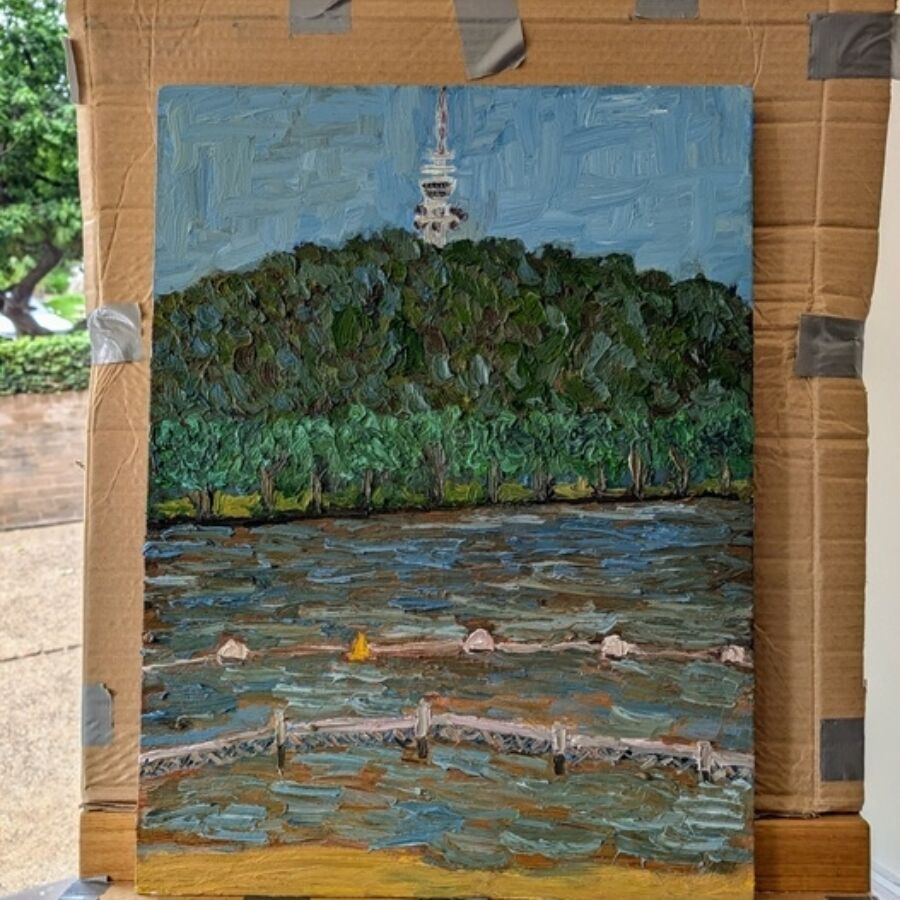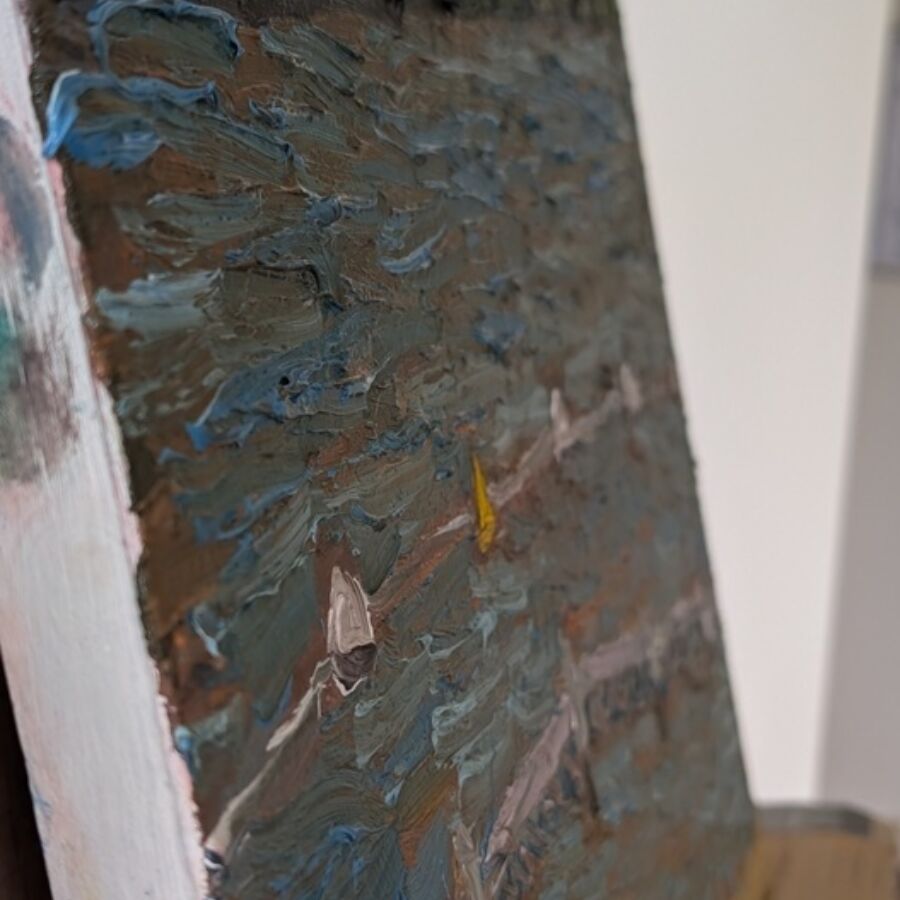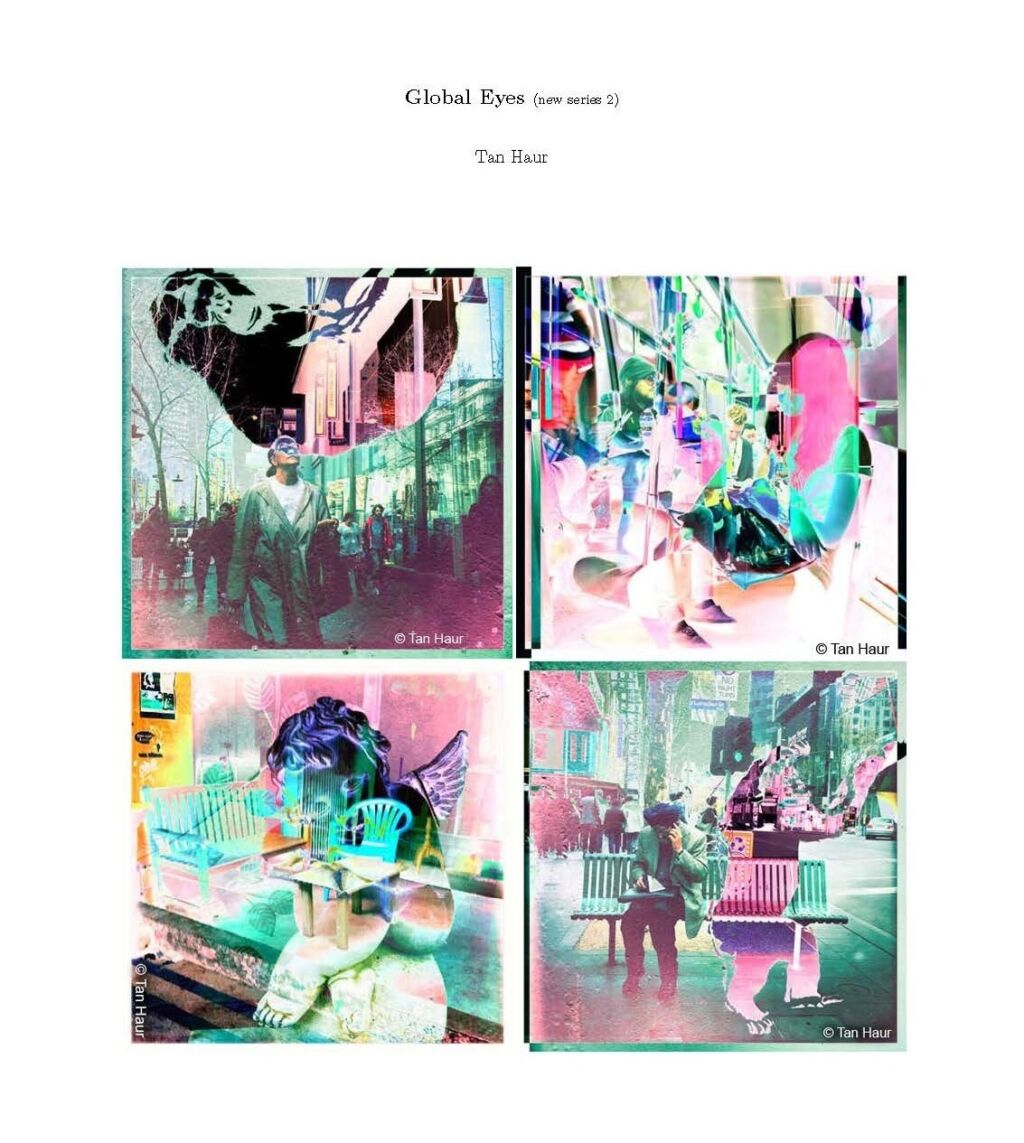Alum Julian Twigg (1984–1986) is remembered at Burgmann for his integral role in creating Dawborn, and is now recognised as an accomplished Australian visual artist. Julian's work, including select originals featuring Canberra and Burgmann College, will be exhibited at Back-to-Burg 2025.
Julian Twigg (1984–1986) is a celebrated visual artist whose works are held in public and private collections; a painter, ceramicist, and printmaker represented by Australian Galleries with numerous solo exhibitions, artist residencies, and art awards to his name.
Julian began his artistic career later in life. His mother was an artist and often gifted him sketchbooks whilst growing up, but Julian says his interest in art didn’t begin to emerge until his university days, converging with the creation of one of Burgmann’s beloved traditions: the Daw-born Cup, later known simply as Dawborn.
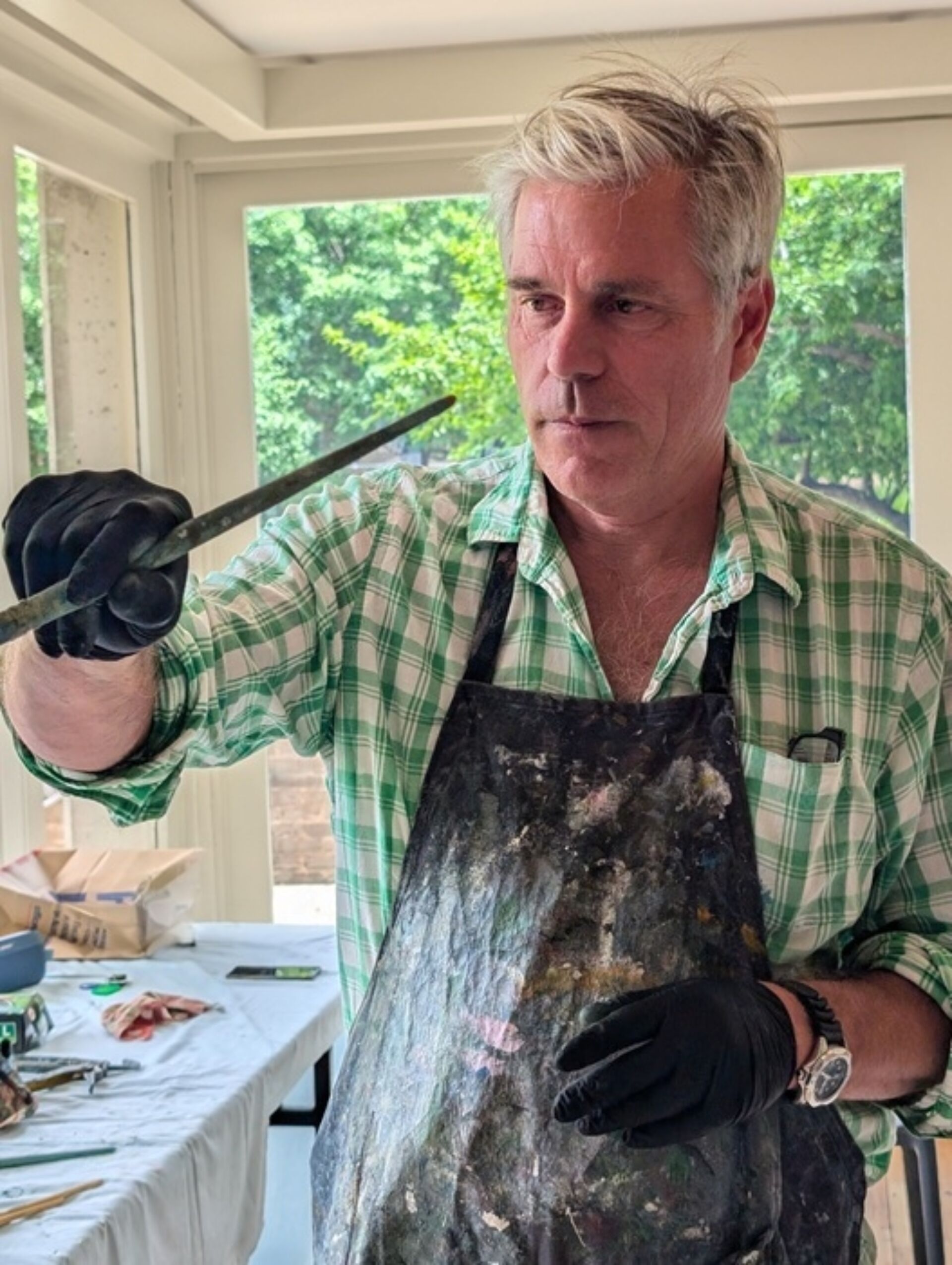
Julian Twigg grew up in Melbourne and was accepted into the Australian National University to study Economics. He followed a few of his Melbourne schoolmates to Burgmann College, and while he says he initially kept to his old crowd, as those schoolmates began to graduate, Julian began to establish new friends and connections at Burgmann College.
One of his new Burgmann friends was Patrick Southey (1982–1984), with whom Julian frequently played pool in the A.R. Main Room. Together, the two created a pool competition at College, and with the help of others, Julian created a committee and a constitution for a pool competition that was christened 'The Daw-born Cup'.
Regarding the name, Julian admits it was 'a pretty odd thing'.
There was a regular student visitor at College whose surname was ‘Dawborn’, which to Julian and Patrick sounded cheekily similar to ‘scoreboard’.
'You know when you play pool or maybe another sport and you beat someone, you point to the scoreboard and say ‘Scoreboard’? I used to do that to Paddy, and probably Paddy did it to me, too—I can’t remember who was the best between us.
'"Dawborn" sounded a bit like "scoreboard", so instead of saying "scoreboard" we would say "Dawborn" to each other.
'One day, I must’ve beaten [Patrick], and I went upstairs to the second floor of Homer to his door with some liquid paper, and wrote "Daw-born" on his door, and it stayed ever since. So when we thought about naming the tournament, we thought "Daw-born Cup" sounded good, so we got Daw-born Cup'.
Although Julian remembers the first year of the competition being very successful, they were concerned the competition would die out after they graduated, so they appointed Daw-born Apprentices, whose role was to learn about how to run the competition and keep it going.
Their efforts to enshrine the competition, which later became known simply as 'Dawborn', were successful, with many Burgmann residents citing their involvement with Dawborn as being one of their favourite memories of their time at College.
'The good thing is, it’s been carrying on for so long and I don’t think the structure of our Daw-born Apprentices has continued, but it was a good idea, and it worked really well. It was such an easy, fun thing to do, and everyone likes playing the game’, says Julian.
Julian’s interest in art began to re-emerge around this time, with simple sketches of pool scenes—balls, cues, and tables—but it was simply a fun, periodic diversion.
After graduating from the ANU with a degree in Economics, he moved to London to work in stock brokerage. Work was stressful, and Julian returned to his flat every day exhausted, and began to sketch to relieve some of the stress.
'I lasted about a year in that job and didn’t particularly like it. I didn’t really enjoy working finance—actually working finance. I enjoyed studying it and getting through the degree was good, and I quite enjoyed the content and everything economics and all the subjects we did. But when it came to real life working as a stock broker, it didn’t really excite me very much.
'The feeling you get when you make a picture is really satisfying; you get a good feeling. And going home after work. I'm doing stock broking all day is exhausting; you just feel down and depressed’, says Julian.
He eventually left that job and travelled Europe for a year, before moving back to Australia. He worked in accounting roles, then married and travelled in France in the mid-90s.
While in France, he realised his true passion was art, and that he wished to study it more seriously. He returned to Australia to study a Diploma of Visual Arts at RMIT Melbourne, which is when he discovered his love of painting the sea.
During his studies in Melbourne, he was living in Middle Park along Beaconsfield Parade, which runs along the shoreline of Port Phillip Bay.
'I lived in a flat there and had a view of the sea. There were two flats downstairs and two flats upstairs, and in between the two upstairs flats was a little room I turned into my studio.
'Starting out at RMIT, we had to choose a subject, so because I had a view of the sea, I chose the ships coming in and out of the Port of Melbourne, so it went from there and stayed with me ever since’.
For Julian, the appeal of the sea isn't only in the ever-changing nature of the water, but the human aspects, too. His work also features people working in harbours, tugboats and other working boats, tankers, freights, and more.
As his subjects are moving and ever-changing, Julian has to work quickly to block in the scenes he wishes to capture, which directly influences his style. His work is gestural, using an impasto technique that emphasises short, thick, quick strokes of his brush and weaving in coarse, colourful layers, which not only allows him to capture rapidly evolving scenes, but also evokes movement in the paintings themselves.
'It’s an interesting thing to paint water, especially the sea. The sea moves all over the place, and lots of different colours, effects of shade, and light. All the ships are different, the weather’s different, and you can go different places. I like the human aspect, too', says Julian.
After leaving the Middle Park flat, he realised the family home he had grown up with in Sorrento (a seaside town south of Melbourne, along Port Phillip Bay), with its pier and boat sheds, offered an ideal location to capture the boats moving in and out of the bay. 'I never even thought when I was young that I would be able to paint there’, says Julian.
Julian's boat shed atelier has been the birthplace of numerous acclaimed maritime paintings, and was featured in Peter Lamont's beautiful, atmospheric short documentary film Netley (Handmade Films, 2011).
Twenty years on from when he first began his artistic journey in earnest, Julian has struck a balance between his career as an artist and his career in accounting, alongside a part-time role as a teacher. He's quick to advise that young artists should plan how to financially support themselves in a way that allows them to pay the bills, while also prioritising their art.
'Keep going and do what you've got to do, but always, your main focus is your artwork, and you've got to prioritise it’, says Julian. 'I think relying on art income would affect your art a bit, too. People are under more pressure just to churn things out—maybe not be so picky and wait until you get [the piece] resolved. So having the other activities is actually really good in a lot of ways, as you get away from your art, and can come back to it, as well. Having the right balance is very important’.
Part of Julian's strategy for incorporating other activities that allow him to return refreshed to his work is artist residencies. He has completed several residencies around Australia, which he says are key to keeping his work interesting. 'The best part of residencies are discovering new things and new subject matter. There are new places to go, and new people to meet. It's good to get away; it really reinvigorates you’, says Julian.
Earlier this year, Julian commenced an artist residency at Burgmann College. We were thrilled to welcome him back to College, and it was a poignant homecoming that his studio was set up in the A.R. Main Room—the same room where he had spent many nights playing pool and sketching scenes several decades before.
He used his residency at College as a chance to explore a new medium and technique, and challenge himself to capture the quieter, more placid scenes of Lake Burley Griffin.
He also was surprised to find new inspiration in the brickwork and windows of College, and the scenes and infrastructure of Manuka Pool, which still features much of its original 1930s architecture.
'I just want to say how great it’s been, coming here. I’ve been well looked after, and I really appreciate everyone’s support. The accommodation is fantastic, and the food’s unreal; I’m eating too much, it’s ridiculous!'
Julian will return to Burgmann later this year to complete his residency, and we're excited to share that original pieces created during his residency will be exhibited during Back-to-Burg Weekend 2025.
To view more of Julian’s work, including his ceramics, etchings, linos, and films in which he is featured, visit his website at juliantwigg.com.
Register now for Back-to-Burg 2025 for your opportunity to view Julian’s exclusive exhibition, catch up with old friends, and see what’s new at Burgmann College.
